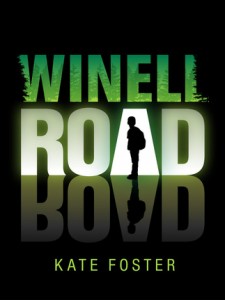Seven Fiction Writing Rules
 Overwhelmed by fiction-writing advice? Me too, and I’m an editor as well as a writer. Everyone and anyone who has a blog or website seems to be keen on throwing in their penny’s worth. A lot of it is genuinely good advice.
Overwhelmed by fiction-writing advice? Me too, and I’m an editor as well as a writer. Everyone and anyone who has a blog or website seems to be keen on throwing in their penny’s worth. A lot of it is genuinely good advice.
But what works for them won’t necessarily be right for you. Want proof? Here, in these six sentences, I’ve broken numerous ‘rules’ that would make grammar lovers wince. I’m not concerned, however, because this article is fairly informal in tone and what’s most important to me is that my voice shines through.
So with this opening paragraph, I give you my fiction-writing Rule Number One: First and foremost, let your voice carry your writing.
The following rules are based on recurring problems I see whilst editing fiction manuscripts.
Rule Number Two: Always move the plot forward.
Flashbacks or trips into the past might be frowned upon by many, but I believe they are fine if revisiting a character’s history in some way progresses your plot. Otherwise, don’t bother filling the reader in on what happened before the character got to this point in time. If it has zero relevance, cut the scene. And leading perfectly on from here…
 Rule Number Three: Please, please blend in backstory.
Rule Number Three: Please, please blend in backstory.
Dumping paragraph after paragraph, particularly at the beginning of a novel, of information that leads up to the story you are about to tell is boring. Put the reader straight into the action, into the moment your protagonist’s life is about to change, the moment your story begins. And then blend, blend, blend. This is the key word. Pointers to something that occurred earlier in the character’s life should be told in as a natural a way as possible as the action plays out. It is tempting to over-indulge in backstory (and world-building), I know. You want the reader to understand motives and events, but not in one giant sweeping action. Be subtle, trust your reader.
Rule Number Four: Make sure something important happens in each chapter.
I hear a lot of authors worrying about how long their chapters should be, and whether they must all be similar in length. To most readers, this really doesn’t matter. What should be your main concern is that each chapter brings something to the story and pushes the plot forward that little bit more. Even if you have a scene that plays out over the course of two or more chapters, provided something new happens in each, then that’s fine. Oh, and don’t forget cliff-hangers. Force your reader to keep reading.
Rule Number Five: Show, people, don’t tell.
Boring, I know. You’ve heard it all before, I know. Yet, it’s a crazily common problem. Watch:
‘John was happy. He was considering jumping up and down but he saw all the people sitting around him. He was thinking about kissing Jane again.’
‘John fought the smile teasing his lips. What would these people around him think if he leapt in the air and bounced about like Tigger? No, it would be best if he remained in his seat. He glanced over at Jane, more specifically at her shiny, full red lips.’
Which do you prefer? Which gives you more imagery, a deeper connection, an engagement with the moment, with the character? The second, obviously, because in the first I simply told you what John was thinking and how he was feeling. In the second I showed you.
Seek out ‘was’ and ‘were’ – these are your red flags. If you’re aren’t sure, switch your past tense to present. Now read it aloud.
‘John is happy. He is considering jumping up and down but he sees all the people sitting around him. He is thinking about kissing Jane again.’
This is a great technique to help teach you how to weed out the telling.
Rule Number Six: Make your characters real.
Every human being, I don’t care what you say, has a good side and a bad side. And if you expect readers to invest their time and care about the characters in your book, they will definitely need to see both. No one will be able to relate to Miss Perfect, or Mr Flawless. They want to know these people are human, that they do wrong, that they’re obsessive or uptight or fussy or neurotic or have a short fuse. The same goes with their lives. Readers need to see dust on the fireplace or piles of paperwork all over the kitchen surfaces or weeds growing in the driveway. They want to see arguments, irritation, routines gone haywire. Throw a bit of rough into the smooth.
I encourage all of my authors to write character profiles, which delve right back into their pasts and ask detailed questions: their strengths and weakness; their likes and dislikes; their physical features; their background; their family, and so on. This way these imaginary people can deepen and take shape in your mind, and only then can you become them as you tell their story.
Rule Number Seven: Make dialogue sound natural.
This follows closely on from the previous rule. I see it so much: conversations between characters that are really vehicles for passing on essential plot points and backstory to the reader; conversations where two friends use each other’s name in every sentence; conversations without contractions or with overdone accents. And more than anything else, I read books where every character sounds the same. All of these make an uncomfortable read. Give everyone in your book a life, give them…well, character.
There are so many other things I could turn into a rule here—perhaps I’ll save them for another day—but I say, focus on these first and you’re half way there.
—
Kate is a freelance editor and proof reader and also works for Ink Pantry Publishing, part of the Open University. She edits anything from middle grade to adult fiction, with the exception of certain genres, and most nonfiction. To celebrate being part of Women Writers, Women’s Books, Kate is currently offering free sample edits and an enormous 35% discount to other members of this group. Visit her website for more information here www.katejfoster.com and be sure to quote code WWWB35.
Category: Contemporary Women Writers, How To and Tips
































I don’t write fiction, but as a reader of about five books a week I agree with all you have said. Readers have an overwhelming number of reading choices. I have come to the point where if an author doesn’t grab my attention quickly, I drop the book and go on to the next one. Use flashbacks wisely or they just confuse me. Make at least one character likable enough for me to care what happens to him or her. It is the characters that make or break a book for me. They make me interested in the plot.
Point three particularly resonated with me. Sometimes I get so caught up into building a rich world I forget the reader doesn’t necessarily need to know everything that ever happened.
Thanks Kate!
Thank you for covering the basics in such a comprehensive way!
You are most welcome, I’m pleased the rules helped you.
Rule number 5 including the examples more than the other rules resonated with me. Thank you.
Glad it helped!
Kate, This is some of the most helpful advice for fiction writing that I’ve seen.. Thanks for sharing. Mary Cooney-Glazer
I’m so pleased it’s helpful, Mary. I say to forget all the technical stuff in the earlier drafts and follow these guidelines first of all. Good luck with your writing.